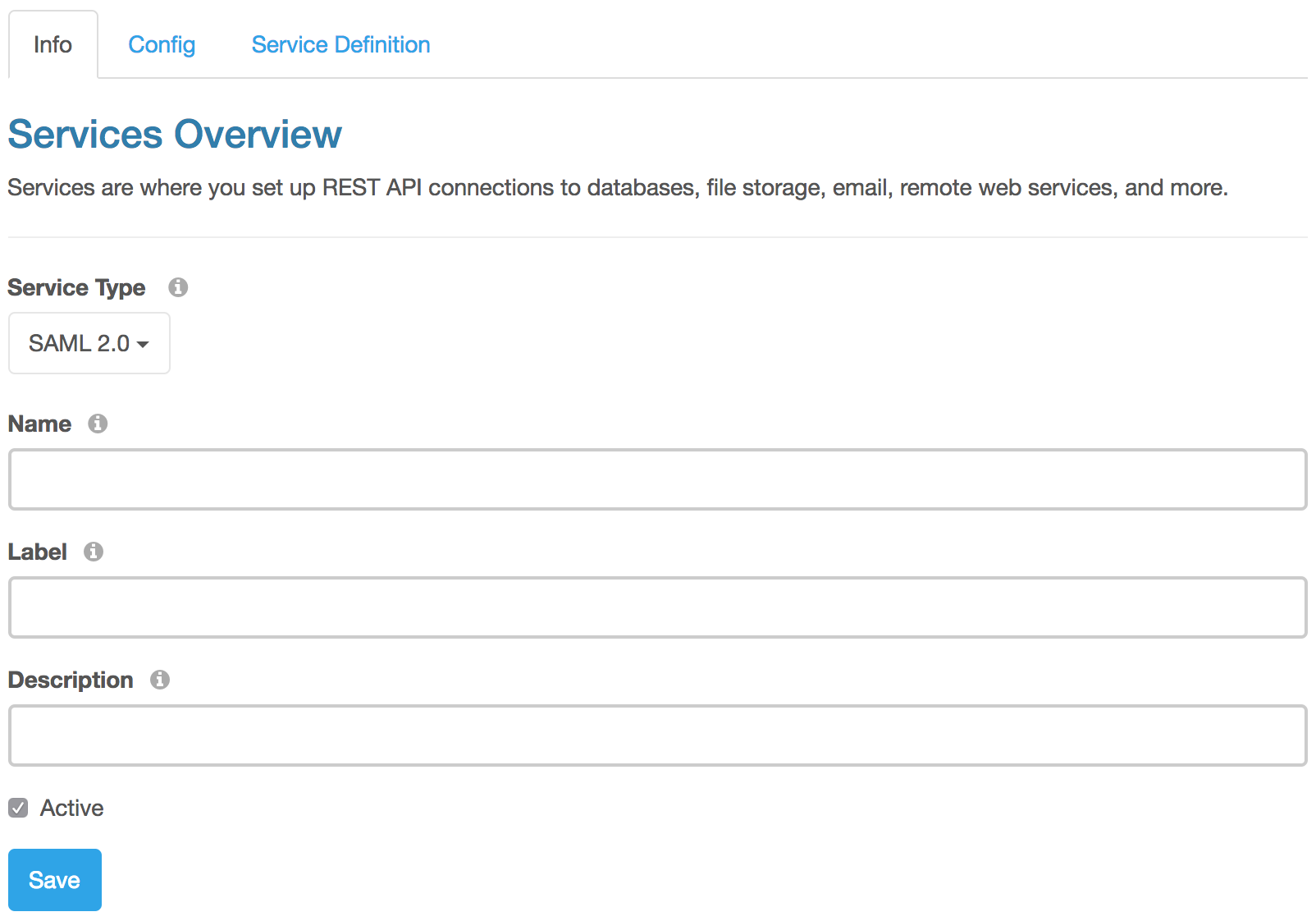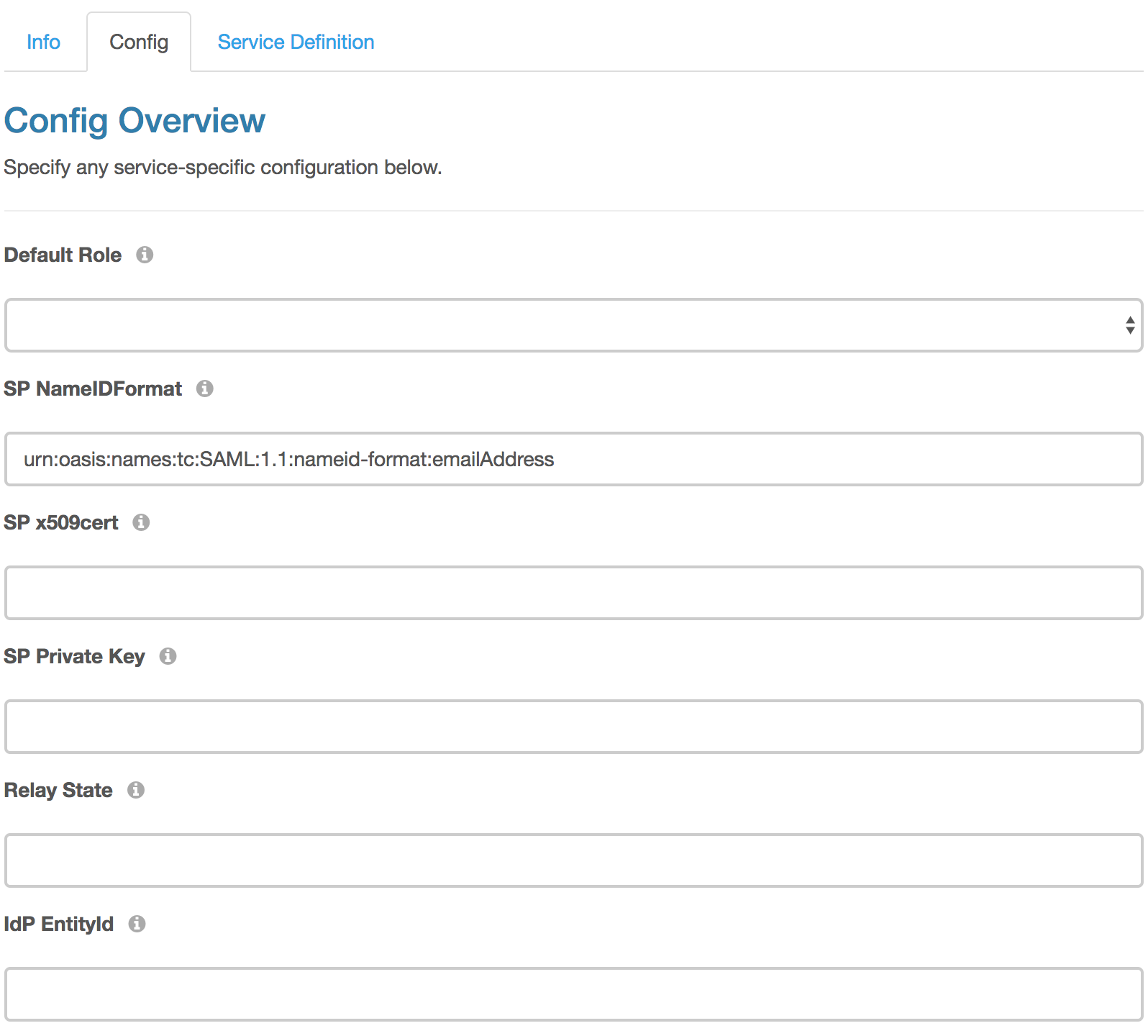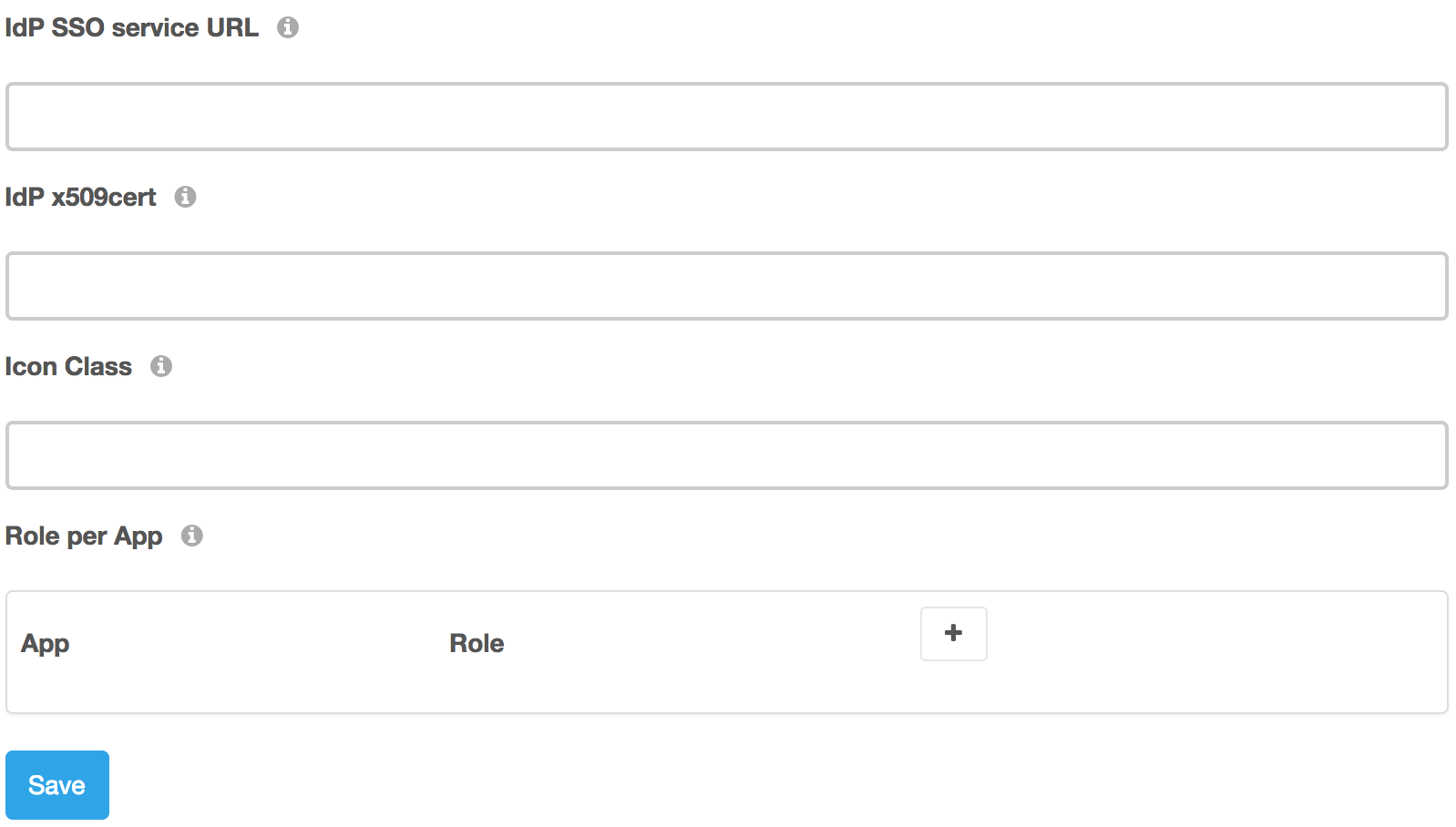Using SAML 2.0
Tutorial
To use SAML 2.0 Single Sign on in a DreamFactory instance, you must have the following PHP extensions installed and enabled.
* php-openssl * php-dom * php-mcrypt
You can then provision a SAML 2.0 service from the 'Services' tab in Admin Console. Start by logging into the admin console, head over to the ‘Services’ tab, and click on the ‘Create’ button on the left sidebar. Use the ‘Service Type’ drop down to select ‘SSO’ -> ‘SAML 2.0’, complete the service configuration form and save it to create your service. Here’s what the SAML 2.0 configuration looks like.
In the ‘Info’ tab, provide basic service information - Name, Label, and Description.
In the ‘Config’ tab, provide the following configuration information:
- Default Role - String. Optional. Select a default role for users logging in with this SAML 2.0 service type.
- SP NameIdFormat - String. Required. Specifies the constraints on the name identifier to be used to represent the requested subject.
- SP x509cert - String. Optional. Public x509 certificate of the Service Provider.
- SP Private Key - String. Optional. Private Key of the Service Provider.
- Relay State - String. Optional. The URL to redirect to upon authenticating and returning from IdP. Leaving this blank will output a JSON with authenticated user information including JWT. If you like to include the JWT in a parameter to your Relay State URL, you can do so using URL like http://example.com?jwt=_token_ . Here _token_ will be replaced by the actual JWT.
- IdP EntityId - String. Required. Identifier of the Identity Provider entity.
- IdP SSO Service URL - String. Required. URL Target of the Identity Provider where the Authentication Request Message will be sent.
- IdP x509cert - String. Optional. Public x509 certificate of the Identity Provider.
- Icon Class - String. Optional. CSS Icon Class of the SAML 2.0 provider.
- Role per App - Array. Optional. Select desired Role per Apps for your users logging in using this service.
Once your SAML 2.0 service is configured, head over to the ‘API Docs’ tab and expand your newly created service to see API endpoints ready for you to use.
- GET - /saml - Lists all available endpoints for your SAML 2.0 service.
- GET - /saml/metadata - Generates SAML 2.0 service provider metadata (XML).
- POST - /saml/acs - This is the Assertion Consumer Service. It processes response sent back from IdP.
- GET - /saml/sso - This is the Single Sign On endpoint that takes your user to the IdP login page.
DreamFactory admin app also supports SAML 2.0 authentication. When you create your DreamFactory SAML 2.0 service, it will also show up on the admin app login page under the ‘username’ and ‘password’ entry option in a section called ‘SAML 2.0 Login’.
If you have entered any icon class for your SAML service in the configuration then that icon will show up here, otherwise it will show your SAML service label as it shows in the above screenshot. This is a hyperlink to the /saml/sso endpoint and it will take you to the IdP login page when you click on it. After you enter your username, password on IdP login page and authenticate, you will be redirected back to DreamFactory and you will be logged in.




